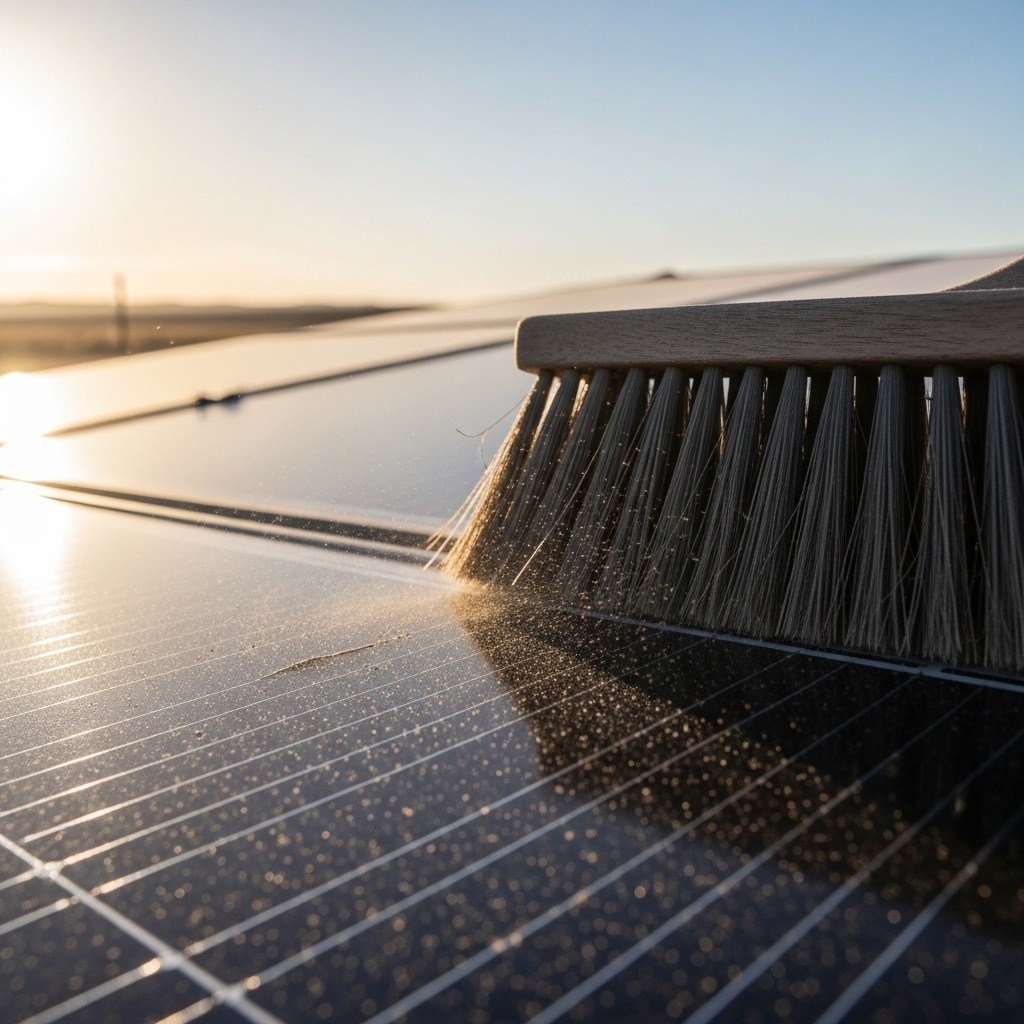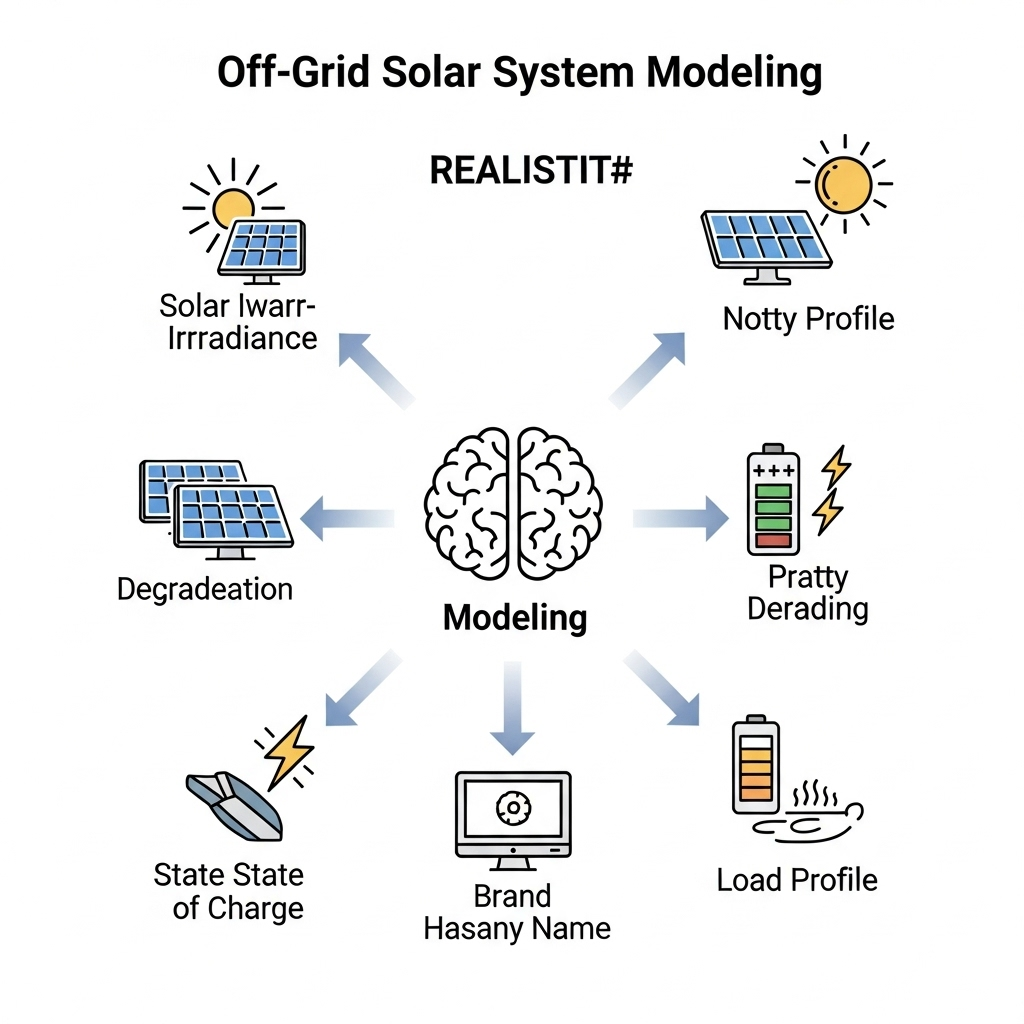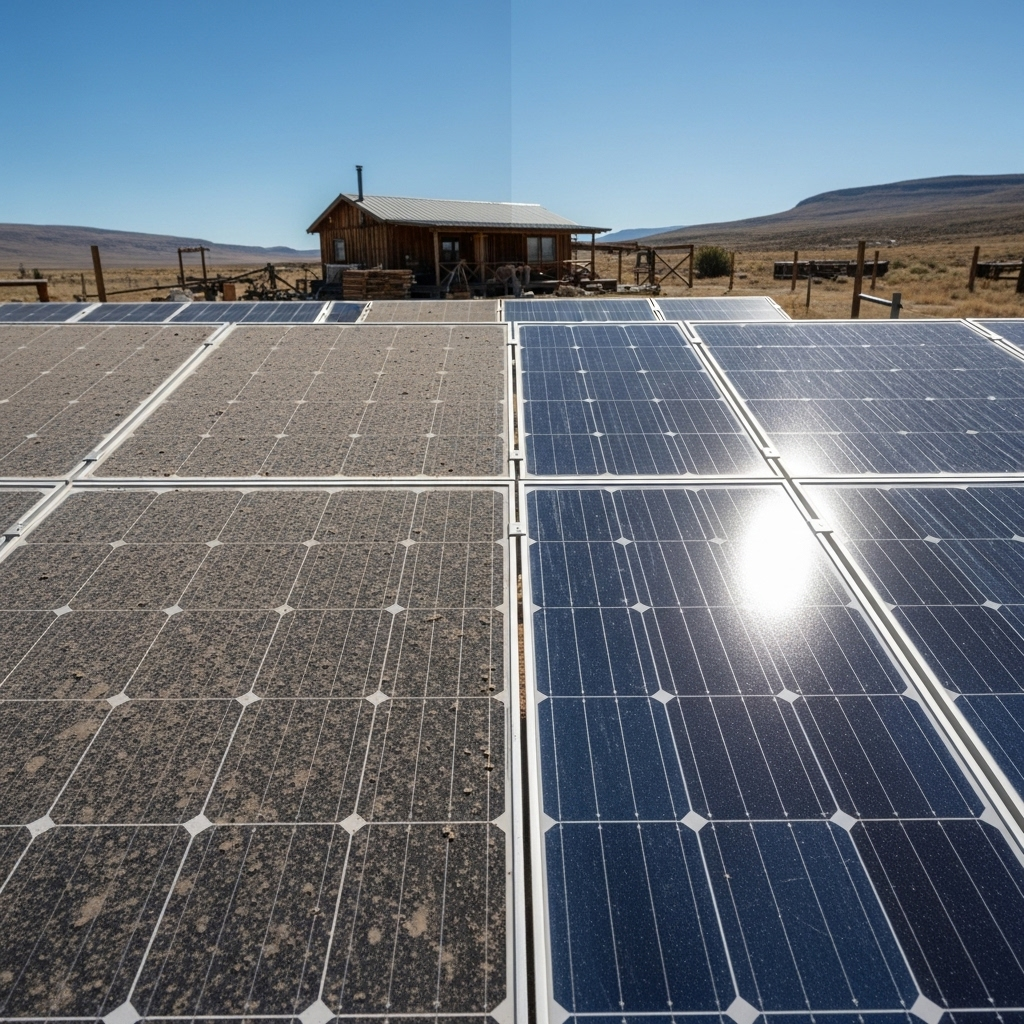For owners of off-grid solar systems, every watt of power counts. Your energy independence relies on your panels performing at their peak. Dust, pollen, and grime—collectively known as soiling—are silent thieves of solar energy. This brings up a critical maintenance question: what is the best way to clean your panels? The two primary methods are dry brushing and wet washing. Each has distinct advantages and potential risks, especially for remote installations where resources like water may be scarce.
The Impact of Soiling on Solar Panel Performance
Soiling directly obstructs sunlight from reaching the photovoltaic cells, reducing your system's energy production. Even a thin, barely visible layer of dust can compromise efficiency. In off-grid scenarios, this loss is not just a number on a monitoring app; it directly affects your daily energy budget and the charging capacity of your lithium battery bank. A poorly performing array means less power for your home, farm, or cabin.
Why Off-Grid Systems Are More Sensitive
Unlike grid-tied systems that can pull power from the utility, an off-grid setup is a closed loop. Any reduction in solar generation puts more strain on your battery storage. Consistent underperformance can lead to deeper discharge cycles for your lithium batteries, potentially affecting their long-term health. Maximizing solar input is fundamental to the stability and longevity of your entire energy solution.
Quantifying the Energy Loss
The impact of soiling varies significantly based on location. In dusty, arid regions or areas with high levels of agricultural activity, energy output can drop by 20% or more if panels are not cleaned regularly. Some studies have recorded losses exceeding 30% in severe conditions. This is a substantial loss that directly impacts your ability to power appliances and maintain a fully charged energy storage system.
Dry Brushing: The Quick and Waterless Method
Dry brushing involves using a long-handled, soft-bristled brush to sweep away loose debris from the surface of your solar panels. It is a straightforward technique that requires minimal equipment and no water, making it an attractive option for many remote system owners.
Advantages of Dry Brushing
The most significant benefit of dry brushing is water conservation. In arid climates or locations where water is a precious commodity, a waterless cleaning method is highly practical. It is also fast. A quick sweep can be performed in minutes, making it easy to integrate into a regular maintenance schedule. The upfront cost is minimal, as it only requires a suitable brush.
Risks and Limitations of Dry Brushing
Despite its convenience, dry brushing carries a major risk: abrasion. Dry dust and sand particles can act like fine-grit sandpaper when dragged across the panel's surface. Over time, this can create micro-scratches in the anti-reflective coating, permanently reducing the panel's efficiency. This method is also ineffective against caked-on grime, bird droppings, or sticky pollen, as it only removes loose particles.
Wet Washing: The Deep Clean Approach
Wet washing uses water and a non-abrasive tool, like a soft-bristled brush or a squeegee, to thoroughly clean the panel surface. This method is widely considered the most effective way to restore panels to their optimal state. As noted in the IEA's Solar Energy Perspectives, cleaning processes are vital for maintaining efficiency across various technologies, a principle that is especially true for solar energy systems.
Benefits of a Thorough Wet Wash
Wet washing provides a superior clean. The water acts as a lubricant, lifting dirt particles and allowing them to be rinsed away without scratching the glass. It effectively removes stubborn soiling that dry brushing leaves behind, restoring your panels to near-peak performance. For systems in areas with significant pollution or biological debris, a wet wash can result in a noticeable and immediate boost in solar energy production.
The Downsides and Necessary Precautions
The primary drawback is water consumption. Furthermore, water quality is critical. Using hard water can lead to mineral deposits (scaling) on the panel surface after the water evaporates. These deposits can be even more difficult to remove than the original dirt. It is best to use deionized, distilled, or filtered rainwater. Another risk is thermal shock; washing hot panels with cold water on a sunny afternoon can cause microscopic cracks in the glass. Always clean panels in the early morning or late evening when they are cool.
Making the Right Choice: A Practical Comparison
Choosing between dry brushing and wet washing depends on your specific environment, resources, and the type of soiling your panels accumulate. A direct comparison can help clarify the decision.
| Feature | Dry Brushing | Wet Washing |
|---|---|---|
| Effectiveness | Good for light, loose dust | Excellent for all types of soiling |
| Risk of Damage | High (micro-scratches) | Low (if done correctly) |
| Water Use | None | High |
| Speed | Fast | Slower |
| Cost | Low | Moderate (water, equipment) |
| Best For | Arid regions with frequent light dust | Areas with sticky pollen, bird droppings, or infrequent cleaning |
A Hybrid Strategy for Optimal Maintenance
For many off-grid system owners, the best approach is a hybrid one. Perform regular, gentle dry brushing to manage light dust accumulation. Then, schedule periodic wet washes—perhaps quarterly or semi-annually—for a deep clean. This strategy balances water conservation with the need to prevent permanent efficiency loss from caked-on grime and abrasion. This proactive approach aligns with the long-term planning mentioned in the IEA's Renewable energy market update, where consistent upkeep is key to achieving renewable energy goals.
Connecting Cleaning to System Longevity
Proper maintenance does more than boost daily output; it safeguards your long-term investment. A clean solar array ensures your entire system, from the solar inverter to the lithium battery bank, operates under ideal conditions. Understanding how cleaning impacts your daily yield is a key part of maximizing your system's return. For a deeper analysis of how to measure and optimize your system's output, the guide on solar storage performance offers valuable metrics and reference points that can help you track the benefits of your maintenance routine.
Final Thoughts on Protecting Your Energy Independence
The choice between dry brushing and wet washing is not absolute. It requires a thoughtful assessment of your local environment and available resources. A proactive maintenance plan is a cornerstone of a successful off-grid solar solution. As highlighted in an IRENA report on Electrification with renewables, system reliability is paramount in off-grid applications. By protecting your panels, you are ensuring the health of your entire energy system, guaranteeing a reliable flow of power from the sun to your lithium battery and securing your energy independence for years to come.
Disclaimer: This information is for educational purposes only. Always prioritize safety when maintaining your solar system. Consult your installer or a qualified professional for specific maintenance guidelines for your equipment. This content does not constitute financial or investment advice.
Frequently Asked Questions
How often should I clean my off-grid solar panels?
This depends heavily on your location. In dusty or polluted areas, a light cleaning may be necessary every few weeks. In cleaner environments, a few times a year might be sufficient. The best practice is to monitor your system's output. A sudden or gradual drop in energy production that is not related to weather is a strong indicator that your panels need cleaning.
Can I use regular tap water and soap to wash my panels?
This is not recommended. Tap water, especially if it is 'hard,' contains minerals that can leave spots on the glass when it dries, creating a new obstruction to sunlight. Soaps and detergents can also leave behind a thin film that attracts more dirt or may even damage the panel's anti-reflective coating. If you wet wash, use soft, deionized, or filtered water and a soft brush or squeegee specifically designed for solar panels.
What is the biggest risk when cleaning solar panels?
The two main categories of risk are personal safety and panel damage. From a safety perspective, falling from a roof or ladder is a significant danger, as is the risk of electrical shock if the system is not properly shut down. Regarding the panels, the biggest risk with dry brushing is abrasion from dust. For wet washing, the primary risk is thermal shock from using cold water on hot panels. Always turn off the system at the DC disconnect before starting any cleaning.
Does rain clean solar panels effectively?
A heavy downpour can be effective at washing away loose dust. However, light rain or drizzle can sometimes make soiling worse by mixing with accumulated dust to create a muddy film that sticks to the surface. Rain is generally not a substitute for manual cleaning, especially for removing stubborn grime like bird droppings or tree sap.





Leave a comment
All comments are moderated before being published.
This site is protected by hCaptcha and the hCaptcha Privacy Policy and Terms of Service apply.